Flowering Beauty: Photos of Desert Ironwood Trees
The desert ironwood tree, Olneya tesota, can be found growing only in the Sonoran Desert of Mexico, California and Arizona. Check out these spectacular photos of ironwoods.
A desert tree
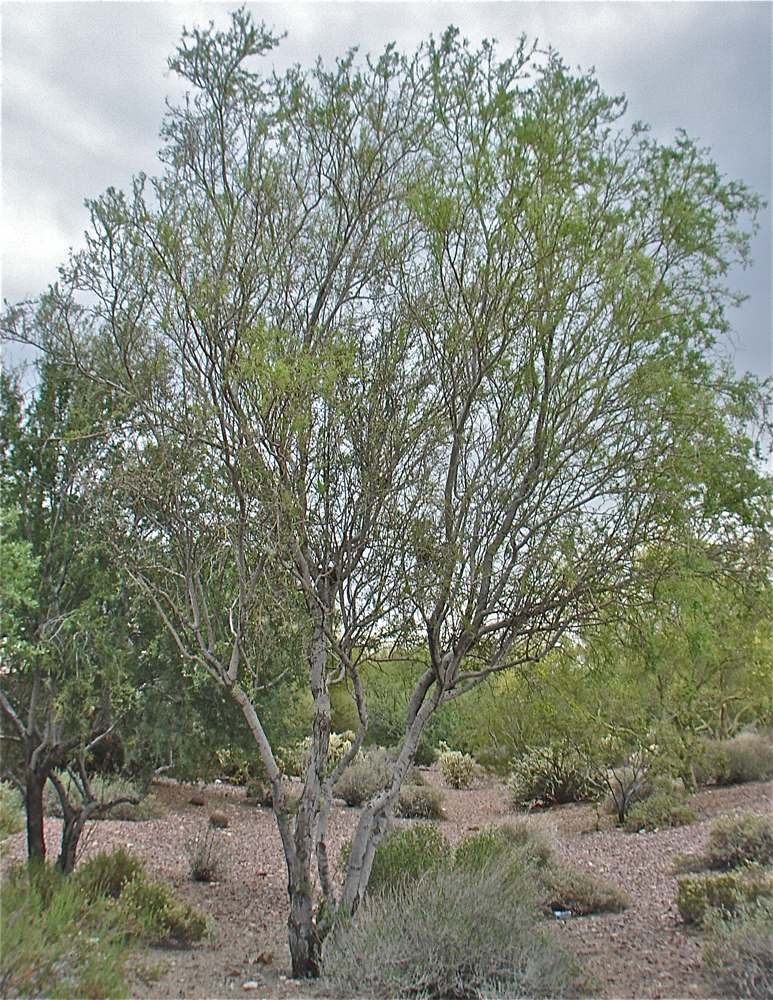
Desert ironwoods grow along the dry washes of the desert region, below 2, 500 feet (762 meters) in elevation. The desert ironwood tree plays an important role in the survival of more than 500 different plants and animals of the Sonoran Desert. (Credit: Linda & Dr. Dick Busche)
A place to cool off
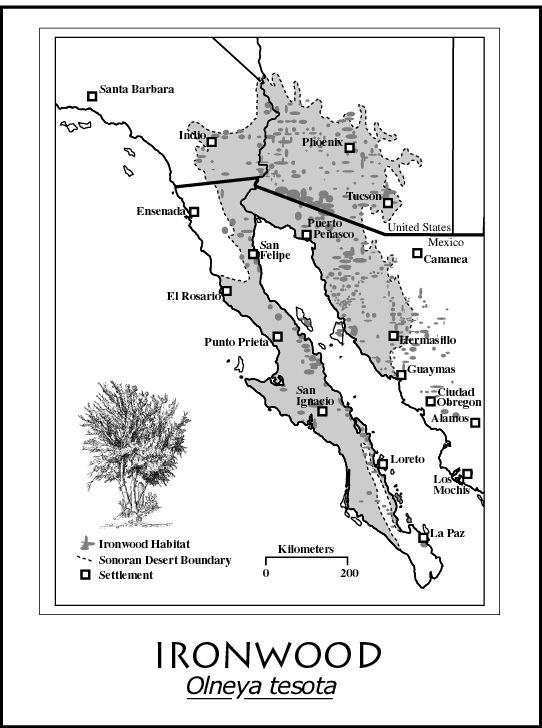
The habitat of the desert ironwood trees is almost an identical match to the boundary of the Sonoran Desert. The ironwood trees shelter an oasis of fertile terrain for other organisms living in the challenging and harsh desert landscape. The canopy of an ironwood tree can grow so dense that air temperatures within its shade may be up to 15 degrees cooler than under the open, desert sun. (Credit: PimaCounty.gov)
Bilingual tree
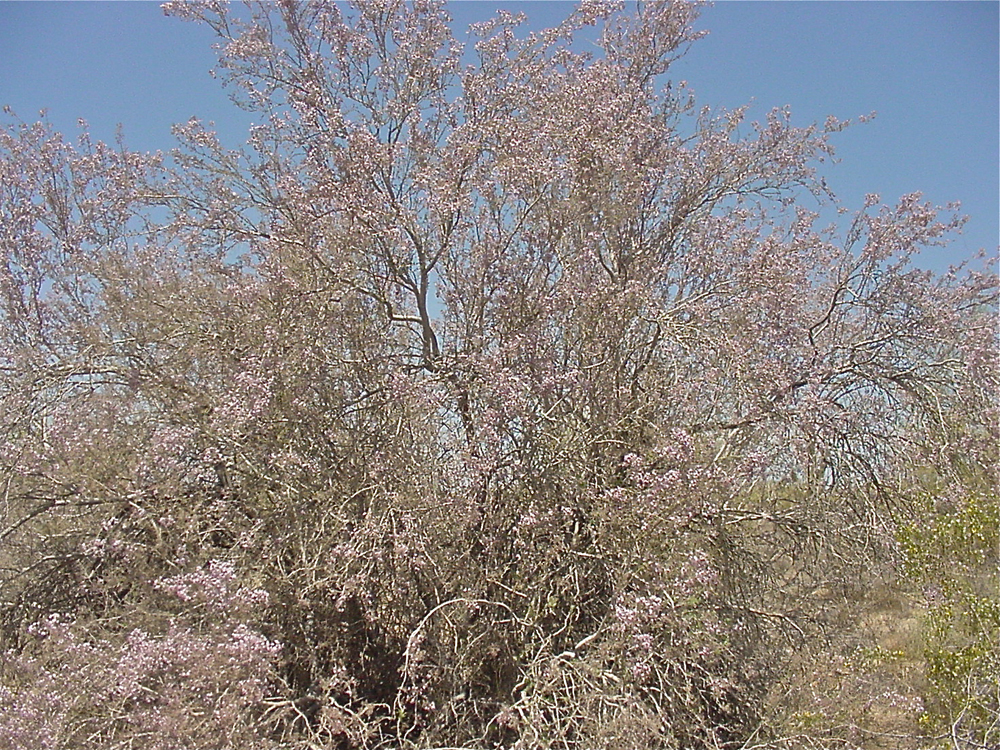
Desert ironwood is also known as "palo fierro" in Spanish. It is noted for its slow rate of growth. It is also considered to be the world’s densest wood. A piece of ironwood, when cut from the tree, will actually sink when placed into water. (Credit: Linda & Dr. Dick Buscher)
Sign up for the Live Science daily newsletter now
Get the world’s most fascinating discoveries delivered straight to your inbox.
The ancient of the desert
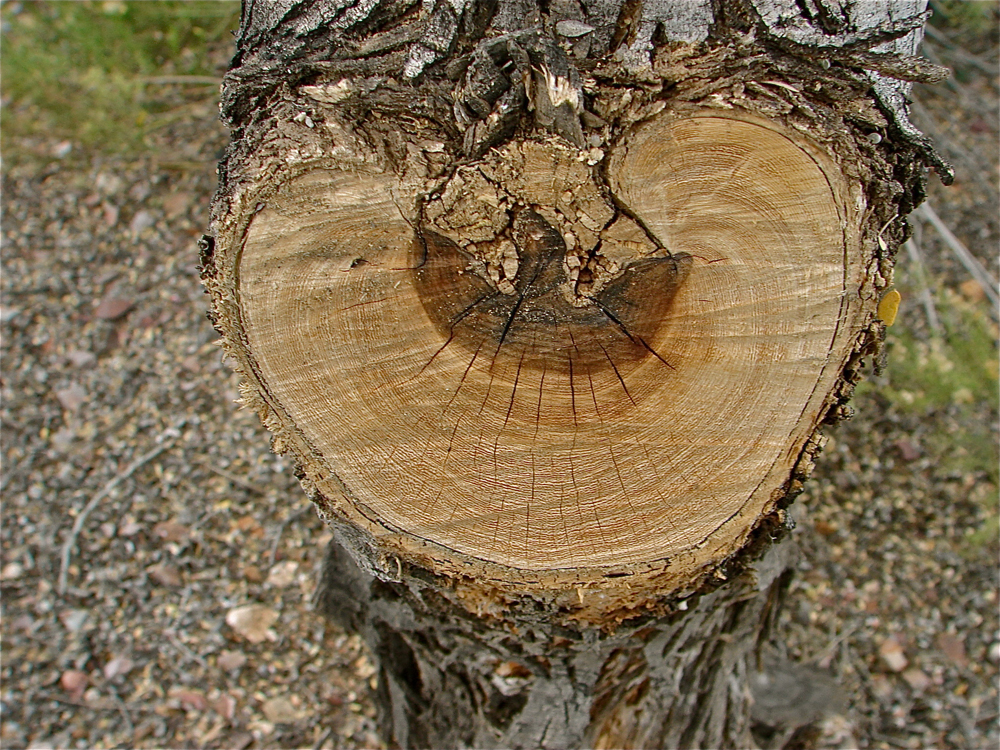
Scientists refer to the desert ironwood tree as the "old-growth" tree of the Sonoran Desert. Because of the density of the wood, common tree-ring dating is difficult. Best estimates show that some trees are upward of 800 years old, and a few are thought to be as old as 1,500 years. Such ages certainly make the desert ironwood one of the longest-living plants of the Sonoran Desert. (Credit: Linda & Dr. Dick Buscher)
Big trees
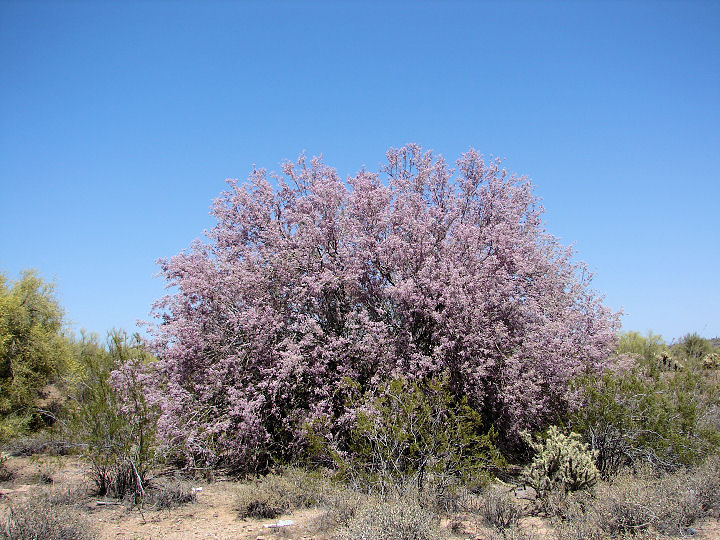
The desert ironwood tree is the only member of the Olneya genus. It belongs to the Fabaceae or pea family. The leaves of the ironwood tree, as well as its flowers, mirror those of a sweet pea. The desert ironwood tree can grow to a height of 45 feet (14 m). The tree is commonly multi-trunked. In the old-growth trees, trunks have been found to reach a diameter of 24 inches (61 centimeters). (Credit: NPS)
Changing with age
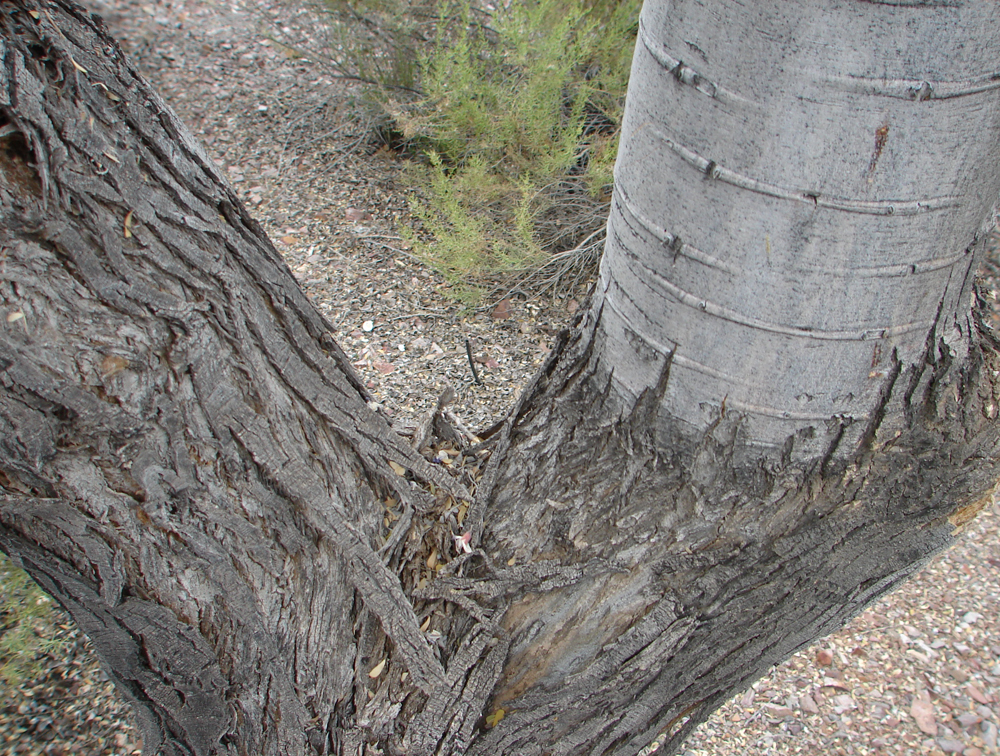
The bark of young trees and young branches tend to be smooth and a whitish-grey in color. This whitish-grey color gives the desert ironwood a unique and distinctive appearance in the Sonoran Desert landscape. Small, sharp thorns are often found on the younger bark. Over the years, the older bark becomes black in color, creased and wrinkled in appearance. (Credit: Linda & Dr. Dick Buscher)
Defense
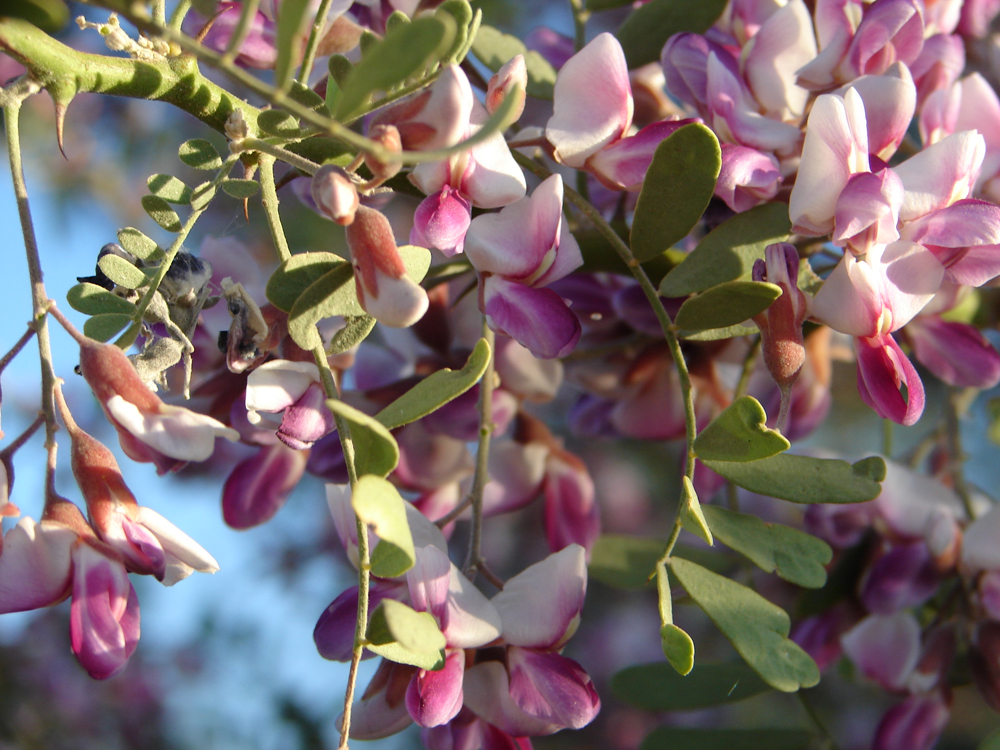
The leaves of the ironwood tree are compound pinnate. Fine hairs cover each leaf and they have a leathery texture. Leaves tend to be about 2 inches (5 cm) long with six to nine leaflets attached. At the base of each leaf is a pair of 0.5-inch-long (1.3 cm) thorns. (Credit: Linda & Dr. Dick Buscher)
Colorful contrast
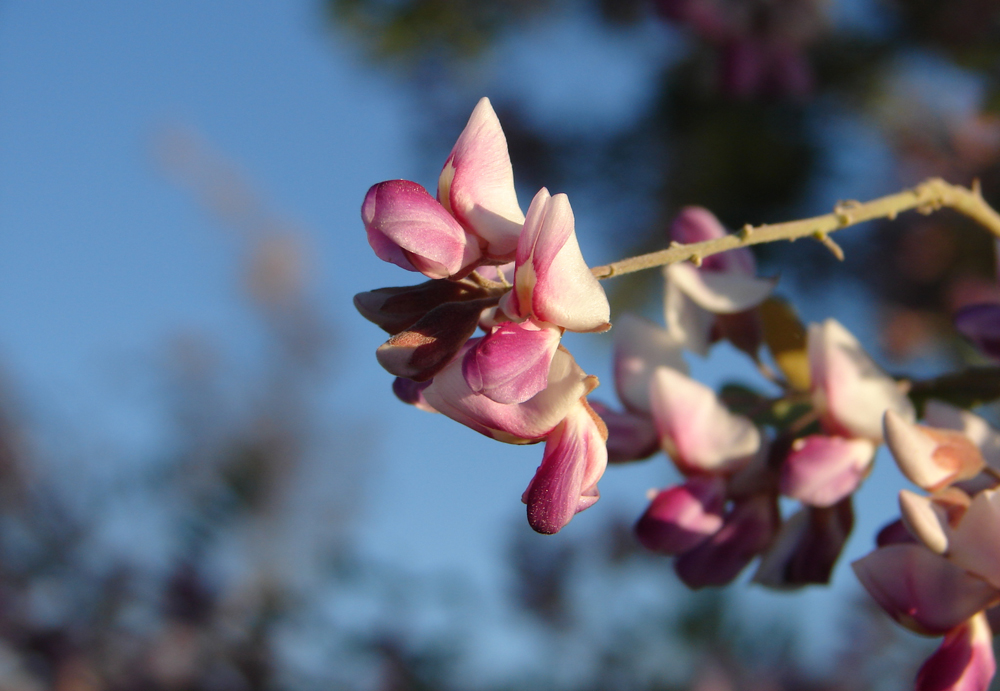
The lavender, pink and white flowers of the desert ironwood trees appear in late April through early June. They grow in clusters at the end of the branches. Ironwood flowers make for a spectacular display of color across the predominately brown and black landscape that is so common in the Sonoran Desert. (Credit: Linda & Dr. Dick Buscher)
Food for all
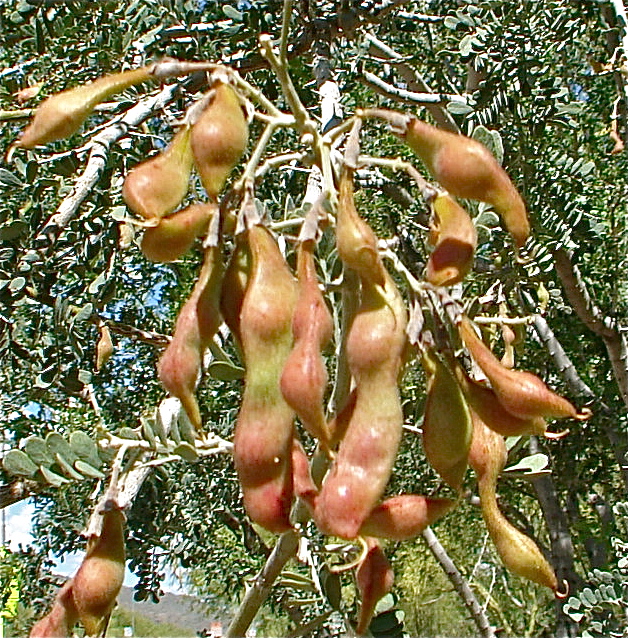
By early July, 2-inch-long (5 cm) seedpods have formed. Each pod contains from one to four shiny brown seeds. The seeds are essential for survival for many Sonoran Desert mammals, birds and even the early Native Americans, who once made the open desert their home. (Credit: Linda & Dr. Dick Buscher)
Rich oasis
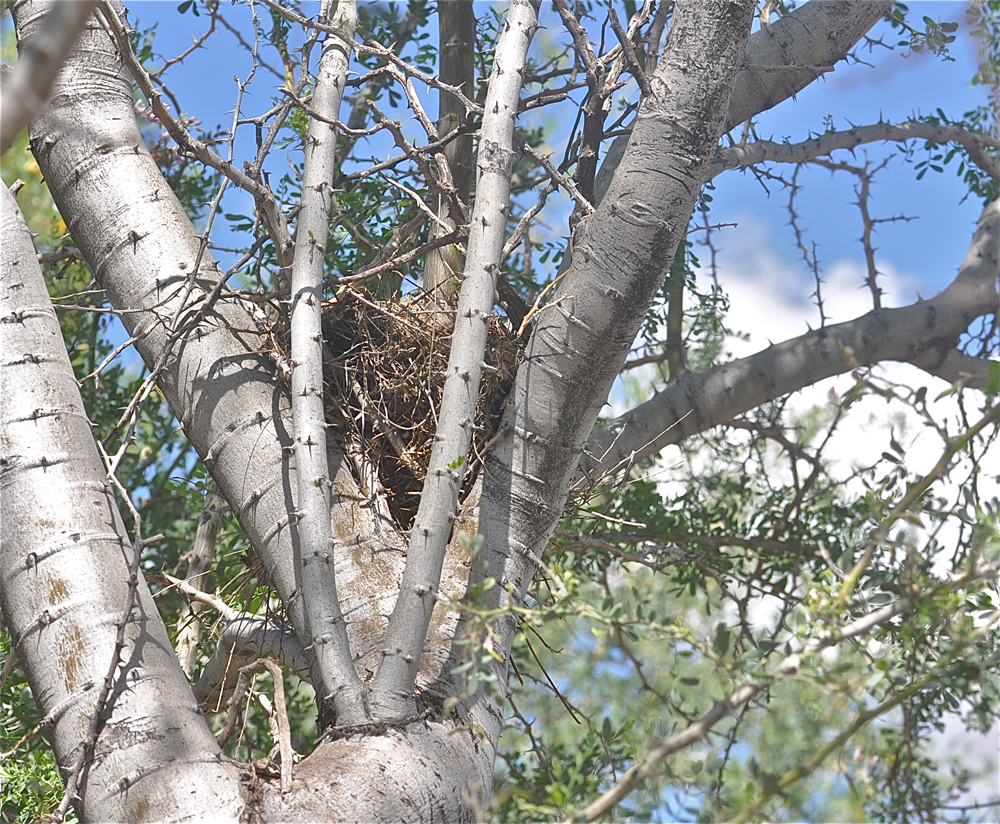
The enriched and shaded soil found beneath an ironwood tree provides an incredible habitat for many kinds of desert plants and animals to grow and survive. Insects thrive within the ironwood complex, as do birds, reptiles and mammals. Studies have documented more than 64 mammal and 60 reptile species using the ironwood tree for cover, foraging and a place to give birth to their young. More than 150 species of birds make use of the ironwood’s shaded sanctuary, too. (Credit: Linda & Dr. Dick Buscher)
A nurturing habitat
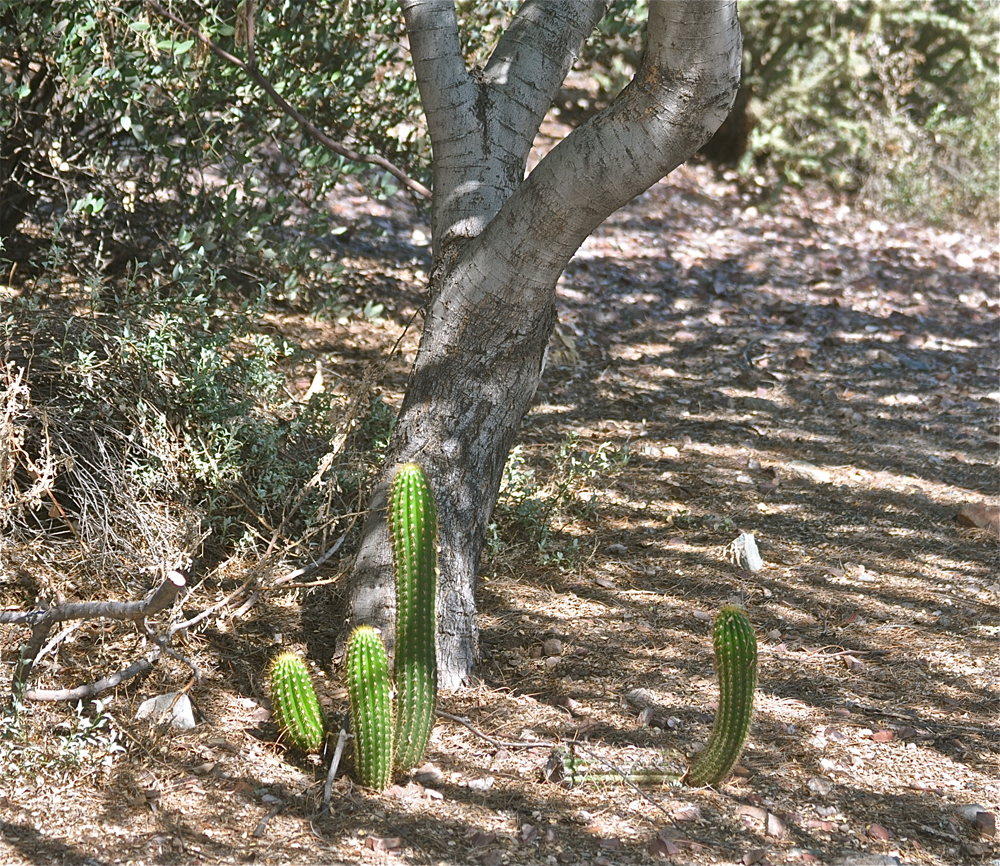
The shade of the ironwood tree acts as an ideal "nurse plant." More than 250 species of Sonoran Desert plants have been documented starting their growth in the nitrogen-rich, shady soil found under the desert ironwood trees. Here, some night-blooming cereus cacti grow under the protective shade of a desert ironwood tree. (Credit: Linda & Dr. Dick Buscher)
Natural medicines
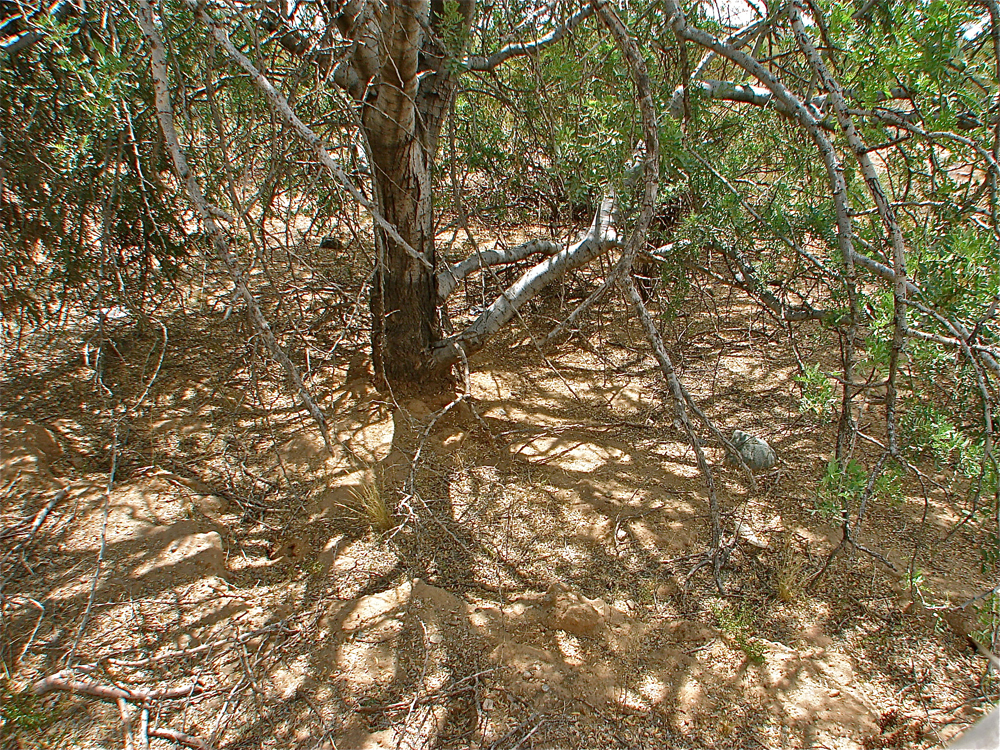
The ironwood tree was the "local pharmacy" for early Sonoran Desert human residents. A paste made from the root could apparently cure gum infection, and tea made from the leaves is said to help with asthma. The tree's hard wood was used for fence posts, firewood and arrowheads. (Credit: Linda & Dr. Dick Buscher)
Economic boost
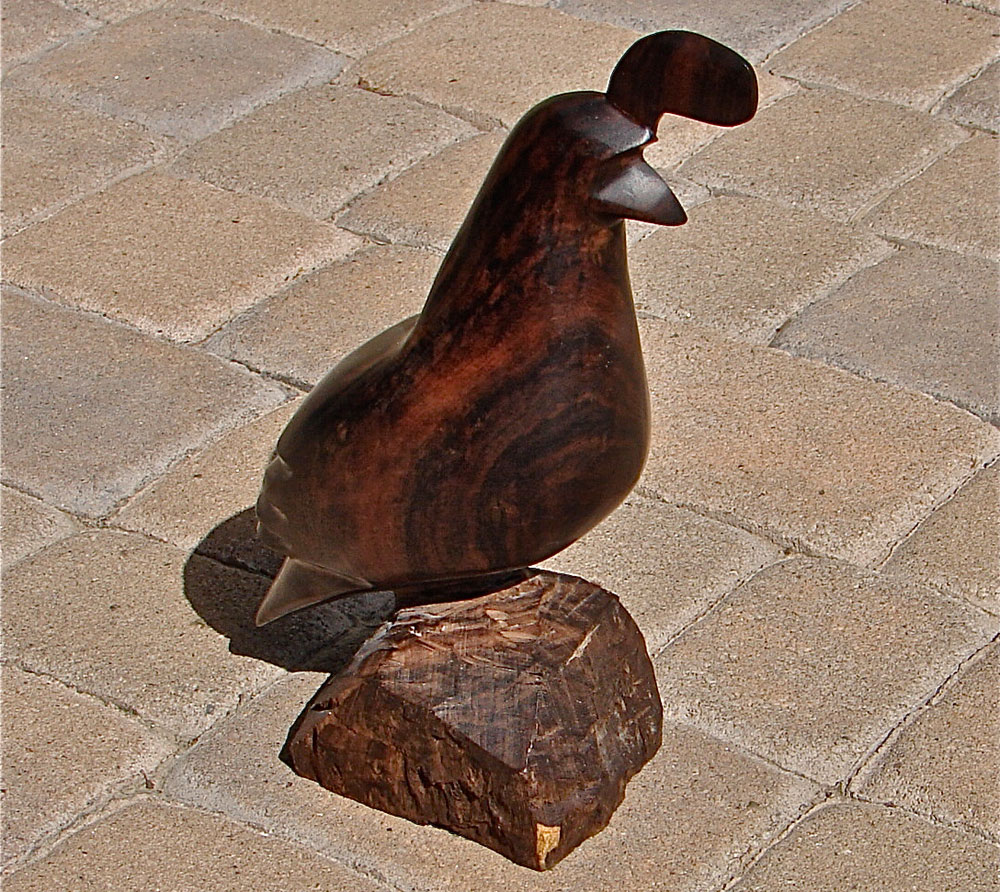
The Seri Indians of northern Mexico have long carved intricate figures of plants and animals from the hard wood of the tree to make money for their families and homes. Seri tradition believes that figures created from the ironwood tree bring long life and good fortunes. (Credit: Linda & Dr. Dick Buscher)
Shelter in the desert

The desert ironwood tree creates a beautiful oasis across the harsh Sonoran Desert environment. The sheltered and fertile habitat found under each ironwood tree is crucial to the survival of hundreds of other plant and animal species. Given enough water, the desert ironwood tree remains evergreen all year long even in the extreme heat of another Sonoran Desert summer. (Credit: BLM)
Follow us @livescience, Facebook & Google+.










